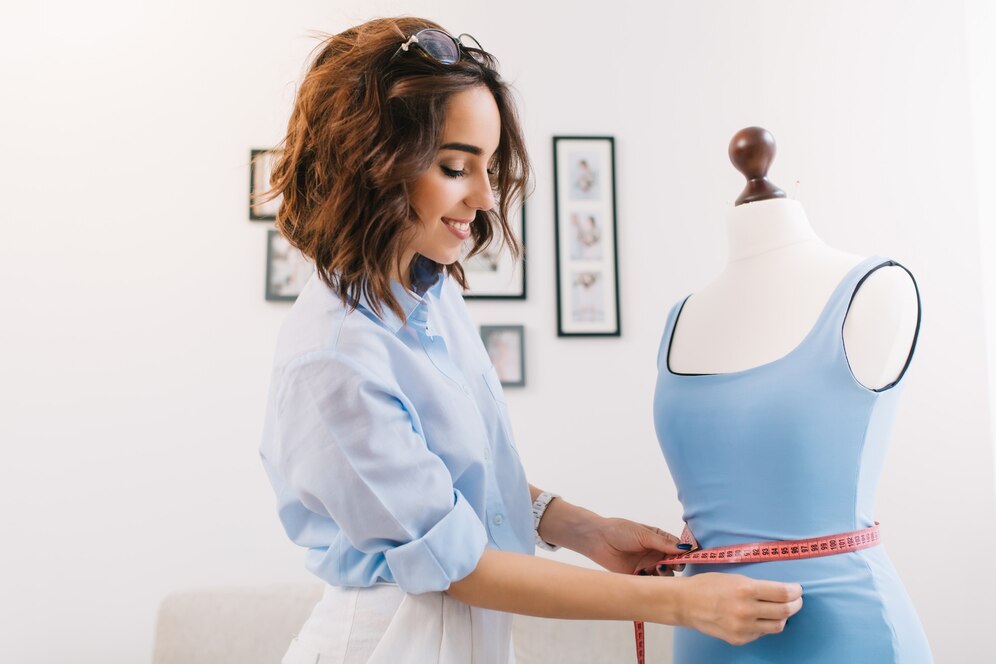Dress forms, essential tools in fashion design, play a pivotal role in creating garments that fit and flatter. From aspiring designers to seasoned professionals, mastering the use of a dress form is key to achieving precise measurements and elegant silhouettes. This comprehensive guide explores everything you need to know about harnessing the full potential of a dressform in your creative process.
Understanding the Basics of a Dress Form
A dress form, also known as a dressmakers’ dummy or mannequin, serves as a three-dimensional model of the human body. It’s typically constructed from materials like foam, plastic, or adjustable metal, offering a stable structure for draping fabrics and designing garments. Here’s a breakdown of its components:
Components of a Dress Form
- Torso and Stand: The core structure on which the dressform is mounted, allowing for height adjustments to match your workspace.
- Adjustable Dials: Found on more advanced dress forms, these allow customization of measurements such as bust, waist, and hip sizes.
- Covering: Often made from fabric that mimics the texture of human skin, facilitating pinning and fabric manipulation during garment construction.
Step-by-Step Guide to Using a Dress Form Like a Pro
1. Setting Up Your Dress Form
Proper setup is crucial for optimal use of your dressform:
- Adjust Height: Set the dress form to your preferred working height, ensuring it aligns with your workspace and comfort level.
- Customize Measurements: Use the adjustable dials to replicate your body measurements accurately or those of your client if designing for someone else.
Draping Fabric on the Dress Form
Draping fabric is a fundamental technique in fashion design that involves pinning and shaping fabric directly on the dressform to create garment patterns:
- Choose Fabric: Select a fabric similar in weight and drape to your final garment material.
- Pin and Shape: Start with key points like shoulders and hips, gradually pinning fabric to create seams, darts, and other design elements.
Creating Patterns and Adjustments
Once fabric is draped, the next step is to translate this draped fabric into a tangible pattern:
- Trace and Mark: Use tracing paper and marking tools to trace the draped fabric, marking where seams, darts, and other design elements will be located.
- Refine Fit: Continuously adjust the fabric on the dressform until you achieve the desired fit and silhouette.
Designing and Finalizing Garments
With your patterns ready, proceed to cut, sew, and assemble your garment:
- Cut Fabric: Transfer your patterns onto your chosen fabric, ensuring to cut accurately to preserve the fit and design.
- Sew Together: Follow your patterns to sew fabric pieces together, periodically fitting them on the dressform to ensure they align with your design.
Tips and Techniques for Maximizing Your Dress Form
Enhance your garment-making process with these expert tips:
- Experiment with Draping: Explore different draping techniques to create various styles and silhouettes.
- Use Marking Tools: Utilize chalk, fabric pens, or pins to mark design elements directly on the dressform for accurate placement.
- Check Measurements: Regularly verify and adjust measurements on the dress form to maintain accuracy throughout the construction process.
Conclusion
Mastering the art of using a dress form is more than just a technical skill; it’s about translating your creative vision into beautifully crafted garments that fit impeccably. Whether you’re designing for yourself, clients, or runway shows, a dress form empowers you to refine your designs with precision and elegance. Embrace its versatility, hone your techniques, and elevate your fashion creations to new heights of sophistication and style.







